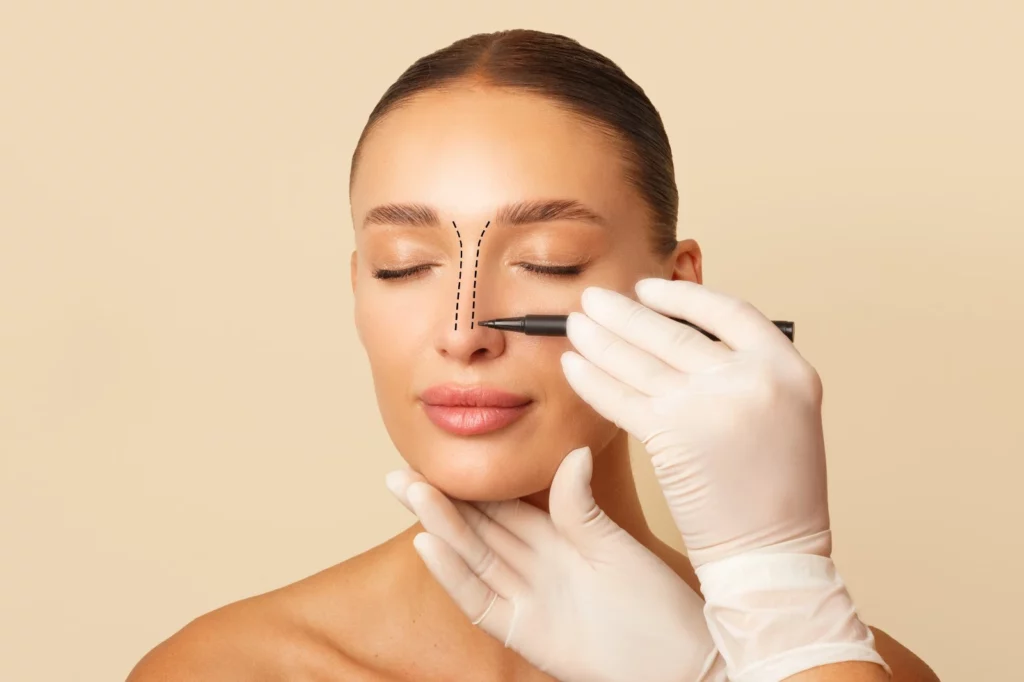One of the most common concerns among rhinoplasty patients is whether their nasal cartilage can shift or move after surgery. This worry is understandable, as the nose is a complex structure of bones, cartilage, and soft tissues that undergo significant changes during the operation. While the healing process following the surgery is generally predictable, various factors can influence the outcome and the stability of the nasal framework. Understanding how cartilage behaves is crucial for patients considering the procedure and those in their post-operative recovery phase.
Is It Possible for Cartilage to Shift After Nose Surgery?
Yes, nasal cartilage can shift, particularly during the initial healing phase when the tissues are still settling into their new position. This movement is more likely to occur within the first few weeks when the nose is most vulnerable. However, people can experience unwanted shifts months later if post-operative care instructions aren’t followed or trauma happens. When the surgery is performed by an experienced doctor using proper techniques and patients follow all aftercare guidelines, significant cartilage movement is relatively rare.
Signs of Cartilage Movement
Visual Changes
Visual changes are often the first indicators that cartilage has shifted after rhinoplasty. The most noticeable sign typically appears in the nasal tip, which may begin to look asymmetrical or tilt to one side. Patients might notice many subtle changes when examining their facial profiles. These visual alterations can develop gradually over time. Therefore, Dr. Zarrabi recommends documenting your healing progress with regular photos and maintaining open communication about any changes you observe.
Physical Symptoms
When to Contact Your Surgeon
Common Causes of Cartilage Movement
Natural Healing Process
Physical Trauma
Physical trauma poses a significant risk to the delicate nasal structure during the recovery period and months after surgery. Even minor impacts can affect the upper lateral cartilage and other healing tissues, potentially compromising the results. Something as simple as bumping your nose while sleeping, getting hit by a ball, or experiencing a minor accident might disrupt the regenerative process and cause unwanted movement. This vulnerability is particularly pronounced in the first six months after surgery when the modified tissues are still establishing their permanent position. Therefore, Dr. Zarrabi strongly emphasizes protecting the nose from any impact during recovery.
Pressure From Glasses or Masks
Poor Plastic Surgery Technique
The surgical technique employed during rhinoplasty is crucial in preventing future structural shifts. Inexperienced surgeons might fail to properly secure the nasal septum or incorrectly manipulate tissues, leading to instability over time. A successful cartilage graft rhinoplasty requires precise positioning, appropriate suturing techniques, and a thorough understanding of the nose’s structural dynamics. When these technical aspects are compromised, the risk of post-operative shifting increases significantly. This underscores the importance of choosing a board-certified surgeon with extensive experience in rhinoplasty procedures and a proven track record of stable, long-lasting results.
Genetic Factors
First Few Weeks
The initial post-operative period is the most critical phase of rhinoplasty recovery. Significant swelling and bruising are common in the first few weeks, making it challenging to assess the final results. The nose cartilage is particularly vulnerable during this time, and even minor pressure or trauma can affect the surgical outcome. Patients typically wear a protective splint for the first week. While most people return to daily activities after 10-14 days, the nose requires careful protection from any impact.
Months 1-3
The second phase of healing occurs between the first and third months post-surgery. Most of the initial swelling subsides during this period, though subtle changes continue as tissues settle into their new position. While the nose becomes progressively stronger, it remains susceptible to external forces. Patients often begin to see the emerging results of their surgery during this time, though some residual swelling may mask the final shape. This period requires continued vigilance in protecting the nose, even as it feels more stable.
Long-Term Stability
After three months, patients enter a long-term healing and stabilization phase. While most significant changes occur within the first year, subtle refinements can continue up to 18 months post-surgery. The cartilage and soft tissues gradually strengthen and settle into their permanent position. By this time, the nose has developed significant resistance to minor trauma, though protecting it from substantial impacts is still advisable. Most patients can fully resume all activities and see their final results during this period.
Timeline of Healing and Risk Periods
Prevention Methods
Proper Post-Operative Care
Wearing Protective Gear
Avoiding Certain Activities
In his approach to cosmetic surgery, Dr. Zarrabi employs cutting-edge techniques to ensure the stability of nasal structures after rhinoplasty. His expertise in working with rib cartilage and other grafting materials allows him to create strong, lasting support that minimizes the risk of post-operative movement. Dr. Zarrabi achieves aesthetic excellence and structural integrity using precise suturing methods and piezo ultrasonic technology. His innovative approach includes customized stabilization methods tailored to each patient’s unique nasal anatomy, resulting in more predictable and sustainable outcomes.





